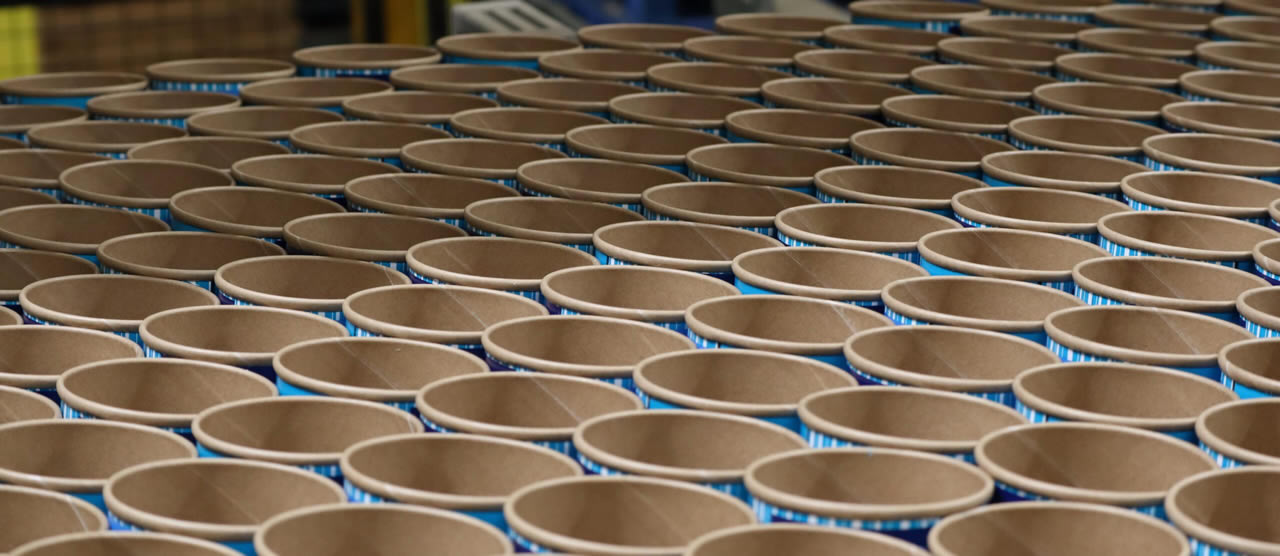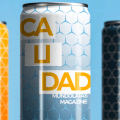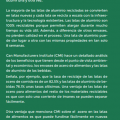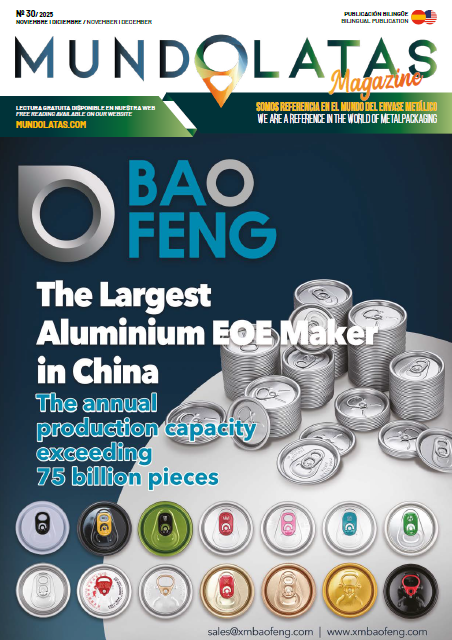-
INTRODUCTION
Sustainability is a major concern in the food and beverage packaging industry. Although several sustainable packaging options are available in the market, such as environmentally friendly packaging, water soluble packaging and edible packaging solutions, the higher cost of such packaging solutions restricts their global uptake. Therefore, there is a need to opt for a low-cost sustainable solution, especially in developing regions; and a metal can is one such packaging solution, which aligns with the sustainability trend as well as the convenience packaging trend. Changes in consumer preferences, in terms of meals, have shifted towards the on-the-go snacking trend, creating a demand for packaging solutions that are portable, easy to handle and sustainable at the same time. Therefore, the demand for metal cans is growing,
Based on the material, the recyclable and reusable properties of aluminium and steel make them the best options to be used as raw materials for the production of metal cans. In terms of metal food and beverage cans, aluminum is mainly used for the production of beverage cans, while steel is commonly used for the production of food cans. Carbonated and alcoholic beverages such as beer, wine and spirits are mainly available in cans. However, increasing demand for canned foods, such as canned fruits and vegetables, is also driving the market for metal cans in the food and beverage industry. In addition, to replace plastics in food and beverage packaging, metal cans are considered one of the economically sustainable options.
On the basis of type, the metal food & beverage cans market can be segmented into 2 piece and 3 piece cans. The 2-piece cans have two components in their manufacture: the can body integrated with the bottom lid and an opening top lid. The 3-piece cans have three components: body, bottom lid and top lid with opening. Making 2-piece cans is easy and efficient, as well as being stronger than 3-piece cans.
Based on application, the market is segmented into food and beverages. The beverage segment is the largest market for these cans, as they are convenient to use and increase the shelf life of the items stored in them. In addition, the greater acceptance of canned beverages due to their hygienic packaging and the nature of their use leads to their dominant market size.
-
METAL TRADE FOR FOOD AND BEVERAGES – IMPACT COVID-19
| 2.1 | IMPACT ON THE SEGMENTS |
| 2.1.1 | BY TYPE |
These include 2 and 3 piece cans. Two-piece cans are mainly of three types: draw (shallow draw) whose height is less than its diameter, draw and redraw (DRD) and draw and iron (D&I). A 2-piece can consists of two components: an integrated body with a bottom lid and a lid with an opening. Steel and aluminium are the raw materials most commonly used for the manufacture of this type of cans. A 3-piece can is made up of three components, namely a bottom lid, a cylindrical body and a top lid with an opening. Steel is used for the manufacture of 3-piece cans because aluminium is not a suitable material for welding.
Metal-based containers provide excellent barrier properties and are therefore widely used in numerous applications such as consumer products, food and beverages, and health and beauty products. Its safety, easier segregation and recyclability are among the main drivers in packaging applications. Growing environmental concerns regarding single-use plastic waste is also a driving factor for this market. Metals such as steel and aluminium are suitable for packaging food and beverage products due to their recyclability and properties such as formability, robustness, tamper-evidence and light weight.
A massive shift in demand can be observed in the sales of various products, such as high-priced fruits, vegetables and canned foods and meat products. Consumers would steadily move towards buying groceries and fresh vegetables and fruits, which, in turn, will drive demand for certain packaging materials. Stockpiling and panic buying of food and beverage products due to the ongoing pandemic scenario is expected to benefit manufacturers of packaging and related services. However, demand for premium, non-food and high-end items is expected to decline due to low consumer demand and spending activities. Therefore, 2 piece packaging would generate higher demand due to its easier manufacture and use in food and beverage packaging. Therefore,
2.1.2 BY MATERIAL
On the basis of material, the metal food & beverage cans market can be segmented mainly into steel and aluminum. Aluminium is the most preferred raw material and is used for packaging processed foods and beverages. Its low weight, impermeability and high flexibility make it a perfect material for packaging. Aluminium finds wide applications in the beverage industry. It reduces the cost of transportation and works as an excellent barrier against air, light and microorganisms. Steel is a preferred material for storing processed foods, seafood, dairy products, syrups, and baked goods. There are two main types of steel grades used for food packaging applications, namely Electrolytic Tinplate (ETP) and Electrolytic Chromium Coated Steel (ECCS).
In recent years, the use of steel in beverage packaging has declined due to the beneficial properties of aluminium, such as excellent barrier properties, cost-effectiveness and customisation. With the growing demand for food and beverages and ever-changing consumer preferences, the packaging industry is evolving, leading to the development of innovative, eco-friendly, sustainable and cost-effective manufacturing processes, thereby driving the demand for metal cans in the industry.
The food and beverage industry incorporates these metal cans in the processing and packaging of a variety of products, from soft drinks to alcohol, frozen foods to fresh foods. The demand for these cans is influenced by the general trend in the food and beverage industry. During this pandemic, demand for food and beverage products experienced mixed consumer demand. Logistical constraints, supply chain problems and the closure of food service establishments were some of the problems faced by the industry.
Raw materials used in the manufacture of these metal cans include bauxite and iron ore. Major countries with bauxite reserves include Australia, Vietnam, Brazil and Indonesia. Similarly, two of the main producers of iron ore are Australia and Brazil. Mining and metal processing activities in these countries were hampered due to the pandemic and also due to reduced end-user demand. The industry has also been affected by isolated cases of infections, mine closures and logistical disruptions.
The aluminium industry experienced a price drop of around 3.8% during the first quarter of 2020. Global aluminium demand is expected to contract by 5.4% in 2020, followed by a prolonged period of slow and staggered recovery, according to the International Aluminium Institute. China’s aluminum demand is anticipated to recover by 2021, and a strong recovery to the pre-COVID era level is projected beyond 2022. For other nations, aluminum demand is expected to follow slow growth by 2021. The steel industry was also severely affected due to blockages caused by supply, demand and financial shocks, high uncertainty in demand from the respective end-use industries and social distancing measures. According to the World Steel Association, the industry is expected to experience a decline of around 6.4% in demand in 2020. The industry is expected to observe about 3.
Demand for both aluminum and steel will rebound strongly as the world returns to some form of normalcy, with some manufacturing units in Europe already cleared to restart operations. The medium to long-term demand outlook remains positive, with attractive growth activities in several aluminium and steel end-use sectors, such as food and beverage, automotive and aerospace.
2.1.3 BY APPLICATION
The wide application of metal cans in the food & beverage industry is among the major drivers of the market. These are used in food processing, beverage processing and storage. Metal can containers are often preferred to plastic or other materials as they are environmentally friendly, provide optimal barrier properties and can be efficiently recycled. They provide convenient and protective packaging for different types of food and beverages, depending on the type of product packaging material selected. For food and beverages, steel and aluminium, respectively, are considered the best packaging materials. Metal food and beverage cans provide complete protection for fillings, as these cans are tamper evident and are suitable for room temperature storage. Therefore, the food and beverage industry is expected to lead the growth of metal can packaging in the coming years. In this study, food and beverages are the main applications considered.
Processed foods require metal can packaging that extends shelf life and maintains nutritional value. Food is the oldest application of metal cans. Food cans are usually made of steel. These cans are internally coated with tin to reduce filler contact with the steel. The tin coating reduces the chances of corrosion and helps to maintain the quality of the products. As consumer preferences change, several technological advances are being seen in the food can industry. Therefore, the growth of the food can industry drives the metal cans market. Food products packaged in cans include fruits and vegetables, prepared foods, pet foods, and meat and seafood.
Beverage packaging is a very convenient and effective way to extend the shelf life of beverages, maintain their taste and texture and prevent spoilage. Metal beverage cans form a popular packaging option for carbonated beverages, energy drinks and beer due to ease of filling, convenience and recyclability. Therefore, innovations in the beverage industry enhance the growth of the metal cans market. People in North America and Europe are more interested in consuming different types of beverages. Busy working lives and high disposable incomes are some of the important factors driving the growth of the beverage industry. Manufacturers produce varieties of metal cans to attract the consumer’s attention, which feeds the growth of the metal beverage can market. Beverage items packaged in cans include alcoholic beverages, soft drinks, and sports and energy drinks. Aluminium is the most suitable metal for beverage packaging.
COVID-19 has impacted the food and beverage industry in a dynamic way. Blockades, logistical problems, supply chain constraints and changes in overall demand have resulted in lower revenue generation for companies involved in the processed food and beverage sector.
The overall impact of COVID-19 on the packaging industry can be differentiated into 3 stages:
- Stage 1 is the early shock period. In this period, consumer demand changes, which points to lower sales of certain products such as industrial equipment and devices, which are related to industrial activities and GDP. Packaging related to these industrial products would also decrease due to lower requirements. On the other hand, the food and pharmaceutical sectors are expected to experience significant growth in demand due to the effects of stockpiling and panic buying, which will increase packaging requirements.
- Stage 2 of the impact would be the period from a few quarters to more than a year. At this stage, countries would focus on controlling the pandemic. In this period, the effect of hoarding and panic buying is expected to reduce, but grocery shopping through e-commerce would grow. Demand for non-food and high-priced items would decrease and demand for low-cost food and beverages would increase. At this stage, packaging producers must also be wary of changing packaging requirements for substrates that address improved hygiene and safety, i.e. minimise the chances of virus transmission through the packaging. In addition, there is expected to be a high demand for low commodity sales prices from end consumers as well as throughout the packaging value chain. Companies should implement appropriate strategies and action plans to protect themselves in this scenario. Countries would also need to prepare contingency measures and provide stimulus packages to support packaging companies during this stage.
- Stage 3, the final stage, would be a rebound. In this post-pandemic scenario, the demand for packaging is expected to witness a gradual increase. The reopening of restaurants, cafes, hotels and other food service outlets would boost demand for packaging. However, recovery in other sectors would be slower, as consumers are expected to show low spending behaviour and restrict purchases of luxury or high-priced items. The speed of recovery for packaging companies will differ greatly by particular segments, depending on the degree of disruption among the segment’s customers and the challenge to the supply chain activities of various companies.
Overall, the food and beverage industry was hard hit by the COVID-19 pandemic. In many places, panic buying situations arose, resulting in food shortages. The supply chain was disrupted due to the blockade imposed on countries and the limited availability of labour, which impacted the supply of ingredients and raw materials. Nationwide blockades in several countries resulted in the closure of several commercial food and beverage outlets. This also resulted in layoffs of many employees and loss of revenue for restaurants and other food service establishment owners. Food demand in many emerging countries is more closely linked to income. The loss of income opportunities could result in under-consumption. Similarly, fear of contagion has limited the pattern of food purchases and consumption of external foods. The lack of tourism has also affected the food and beverage industry. For example, Spain’s economy depends heavily on tourism. As the COVID-19 pandemic progressed, the tourism industry came to a halt, which, in turn, affected the food and beverage industry’s revenues. The sudden shift has changed people’s shopping pattern, resulting in less traffic in restaurants and an increase in e-commerce deliveries.
We are currently in Stage 2 of the pandemic scenario. Increasing reliability in e-commerce deliveries, in addition to gradual lifting of blockades and normalization of the economy in a post-COVID scenario or a Stage 3 situation, is expected to drive the F&B metal cans market over the next 1-2 years. Going forward, measures such as safe and sustainable packaging, responsibly sourced raw materials, sustainable manufacturing practices, e-grocery options and home delivery, automated solutions and tools, and digitization are expected to further drive the food & beverage industry, thereby boosting packaging requirements. .
2.2 IMPACT ON THE REGIONS
2.2.1 NORTH AMERICA
The impact of COVID-19 can be observed in all regions. The North American food and beverage industry is dynamic in terms of food preferences, convenience, food safety and food security. Countries such as the United States, Canada and Mexico were affected by the pandemic.
- 2. 1. 1 United States
The United States is the largest economy in the world. The country’s economy is driven by its advanced infrastructure, technology and abundant natural resources, according to Investopedia. The U.S. economy is severely affected by the COVID-19 pandemic. Factors such as social alienation, reduced demand, disruption of supply chains, falling stock prices and the blockade have stalled the country’s economic growth. According to the IMF the US economy contracted at an annualised rate of 31.7% in the second quarter and the unemployment rate reached 10.2% in July. Manufacturing accounts for 11% of GDP and is disrupted due to global supply chain constraints and factory closures due to reduced demand.
In the food and beverage industry, disruptions were observed in supply chain logistics, demand for raw materials and demand for finished goods in general. Demand for food increased for a brief period due to panic buying and stockpiling by consumers. However, the trend declined during the second quarter of 2020. For the beverage industry, sales of beer and soft drinks have increased in the country, according to MetalMiner. Demand for canned beverages rose 8.3% in the first quarter, with canned beer up 6.7% and soft drinks up 9.3%, according to the Can Manufacturers Institute. However, the industry has seen a shortage of aluminium cans, as these had replaced small kegs during the pandemic. In the United States, aluminum can shipments rose 5.5% year-on-year, in the second quarter to 413.9 KT, up from 53.6 KT in the first quarter, according to the Aluminum Association. This was a 65% increase over the first quarter of 2019. According to Ball Corporation,
- It has a shortfall of around 8 billion to 10 billion cans in 2020. The company has expanded its domestic capacity at its existing plants and is also undertaking further expansion. by building new plants in Glendale and Pittston, USA. These 2 facilities are expected to supply around 6 billion cans by the end of 2021. Canpack, a leading packaging solutions company, will also enter the North American market by establishing an aluminum beverage can manufacturing unit by the end of 2021. According to the Can Manufacturers Institute, can makers are expected to import more than 2 billion cans by 2020 to meet demand. Can makers are also expected to have to produce an additional requirement of around 12 billion cans by 2021.
The market trend for aluminium cans is not only pandemic-induced, but rather a structural change from traditional glass or plastic packaging. The sustainability and recyclability of aluminum cans is the main factor driving increased adoption of these products in the beverage industry. This trend is expected to benefit can makers and related companies in the coming years. In light of the pandemic, companies in this sector have also developed effective response strategies and plans, such as establishing an interdisciplinary crisis response team of personnel from all aspects of the business segments to identify, assess and manage risks, according to Magzter.
- 2. 1. 2 Canada
Canada’s food and beverage market also witnessed logistical disruptions, low demand, changing consumption patterns and supply chain issues due to the pandemic. The food and beverage industry plays an important role in the country’s economy. The industry contributed about 17% of manufacturing revenue in 2018, according to Statistics Canada. It is also one of the largest employers and buyers of raw materials of agricultural products. At the onset of the pandemic, demand for food services fell sharply, while the food retail sector experienced considerable growth. Across the country, most states had declared closures of non-essential and close-contact businesses. Food retail outlets were declared essential sectors, but restaurants and other food service outlets were considered non-essential. Therefore, vendors and suppliers involved in the foodservice sector experienced a decrease in demand. In the beverage industry, microbreweries are experiencing shortages of aluminum cans due to the sudden change in consumption patterns caused by the pandemic. Canada has a sizeable aluminum industry, but also imports cans from the United States. According to Statistics Canada, the country imported about 2 billion cans from the U.S. in 2008.
- In 2018. In the current situation, companies like Moosehead Breweries, Upstreet Craft Brewing and others are facing a shortage due to sudden increase in demand and delayed imports. Another company, Molson Coors Beverage Co. also witnessed shortage of aluminum cans, which is expected to hamper the sale of slow-moving brands. Moreover, import tariffs on export of aluminum from Canada to the U.S. have also affected the industry. Moreover, factors such as plant closures have also exacerbated the shortage of cans in the beverage sector. Due to this situation, many breweries are now accessing cans from different origins, such as Asia and Europe, and are also reducing production of low-selling brands to maximize packaging utilization. However, increased demand for cans is expected to support the growth of aluminium can foil manufacturers. Overall, aluminum can shortages and supply delays have been observed in the industry, but the situation is expected to improve in the coming years. Increasing demand for cans is expected to support the growth of aluminum can sheet manufacturers. Overall, aluminum can shortages and supply delays have been observed in the industry, but the situation is expected to improve in the coming years. Increasing demand for cans is expected to support the growth of aluminum can sheet manufacturers. Overall, aluminum can shortages and supply delays have been observed in the industry, but the situation is expected to improve in the coming years.
The Canadian Food Inspection Agency (CFIA) implemented measures to safeguard the food supply during this pandemic and ordered critical inspections, investigations, recalls and food import inspection activities. After the lifting of the restrictions, sales in the food service and drinking establishment sectors grew by
26.8% to USD 3.9 billion from May to June 2020, according to Statistics Canada. However, due to COVID-19, June 2020 sales for food service outlets were lower than June 2019. Over the next 1-2 years, the normalization of the pandemic scenario is expected to generate higher revenues from the food service and retail sectors, thus stabilizing the economy.
- 2. 1. 3 Mexico
Mexico has benefited from a number of reforms, including open borders, foreign direct investment, the North American Free Trade Agreement (NAFTA), the Comprehensive and Progressive Agreement for Trans-Pacific Partnership (CPTPP), and integration and improved manufacturing practices. According to Euromonitor, the packaged food market is estimated at around USD 52.6 billion in 2019 in Mexico. However, in 2020, Mexico’s consumer outlook is expected to contract significantly due to the impact of COVID-19, with real household spending projected to decline by 6.1% compared to the pre-COVID-19 environment, according to Fitch Solutions. Investment has suffered and consumption has been hit hard. Therefore, dependence on the United States for trade and other activities would further diminish economic activity.
The food and beverage retail sectors are expected to experience minimal declines in revenues due to aggressive consumer purchases. In Mexico, the beverage sector has also experienced a significant increase in consumption. The adoption of aluminum cans has increased due to their recyclability and also because consumers favor the portability and storability of cans as they spend more time at home. There was a shortage of exports of beer brands such as Modelo, Corona, Coors Light and others from Mexico, as many non-core breweries closed their operations due to the pandemic. In addition, some players have also reduced their operations due to the shortage of packaging material. However, the shortage of aluminum packaging in the U.S. is not a problem. It caused companies to look for alternative sources such as Mexico and Brazil, where demand for beverages has fallen due to the pandemic. Post normalization of the economy, the trade scenario is expected to improve, which would further boost the food and beverage retail markets as well as boost vendors and suppliers associated with food service outlets post their reopening.
Overall, in North America, the accelerated migration of shopping trends from physical stores to e-commerce platforms is expected to have a long-term impact on the food and beverage industry. In addition, increased safety and traceability controls, price awareness, at-home dining options, locally sourced food products and technology-enabled food and beverage production will change the landscape of the food and beverage industry in the region in the next -2 years.
2.2.2 EUROPE
Europe has some of the most developed economies in the world. Germany, France, the United Kingdom, Spain and Italy are some of the economies considered in this study. These countries were severely affected by the COVID-19 pandemic, but have been moving steadily towards normalization after the easing of restrictions.
- 2. 2. 1 Germany
Germany is a highly developed nation and is the fourth largest economy in the world and the largest in the European region according to the World Bank. According to the German Economic Institute (IW), the economy is expected to contract by around 3 to 10% in 2020. Germany’s economy is experiencing a slowdown due to the COVID-19 pandemic. After steady growth over the last decade, the country’s economy entered recession in the first and second quarters of 2020, but is expected to start recovering from the third quarter. The government has put in place various measures such as border closures, closure of non-essential businesses, social distancing and banning of public gatherings to control the spread of the virus. Due to this, the industrial sector will experience an 18% drop in business according to the German Economic Institute (IW).
Consumer confidence is deteriorating and disposable income per capita is expected to decline by around 6.4% in 2020, according to Euromonitor. Spending outside the home has declined in the country. Consumer spending on travel, eating out and drinking has declined significantly. According to Euromonitor, value sales are expected to decline further by 15-20% in Q2 2020. In 2019, more than 75% of spending came from food traffic in the consumer foodservice sector. The food and beverage retail sector is expected to grow by around 6%, in volume terms, while sales in the foodservice sector are forecast to decline by around 23%, according to Euromonitor. In the food and beverage industry, foodservice outlets were allowed to reopen in May 2020. However, social distancing measures and in-store environments would have a high impact on sales at these food service outlets. In the next 1-2 years, new trends such as food delivery, online grocery shopping and local sourcing of raw materials would drive the food and beverage industry. In addition, food and beverage companies would benefit from focusing on sourcing materials from the local market and manufacturing good quality commodities at affordable costs.
In the metal packaging sector, demand from the beverage industry has been high, with can producers experiencing high run rates but a limited supply chain, while the market for aluminium tubes and aerosol cans is experiencing overcapacity. Aluminium tubes recorded a drop in the cosmetics and pharmaceuticals sector, while falling demand for lacquers and deodorants hampered the aerosol packaging sector. However, manufacturers of cans for do-it-yourself applications, foods such as soups and ready meals benefited as people stayed home and restricted social gatherings. Germany is currently under partial blockade due to the second wave of Covid infections. In the new directives, food service outlets must remain closed, except for take-out food. Essential services such as hospitals, retail stores and schools will remain open during the shutdown. This is expected to boost domestic consumption again and boost packaged F&B products in the country. A strong recovery was seen in the 3rd quarter, but growth in the 4th quarter is expected to decline due to these new blocking restrictions.
- 2. 2. 2 Italy
Italy is the eighth largest economy in the world, according to Investopedia. It is also a leading member of the European Union. Automotive, construction, textiles and food and beverages are the main industries driving the country’s economy. Italy has been the epicentre of the coronavirus outbreak in Europe. It is one of the most affected countries in the world. The pandemic had a major impact on their economy as industrial production dropped significantly. According to the General Confederation of Italian Industry (Confindustria), industrial production in the first quarter of 2020 was expected to contract by 5.4%. Industrial activities in Italy decreased by around 16.6% in March in comparison with February 2020.
In the F&B sector, according to Statista, 78% of food companies faced a significant decrease in orders due to the COVID-19 pandemic. This also led to the cancellation of trade fairs, which is an important platform for the growth of the food and beverage industry. According to Federalimentare, a food industry association, the Italian food and beverage industry is expected to experience a decrease of about 10-15% in sales of its products on the domestic and foreign market. As a result, output would also weaken in the fourth quarter of 2008.
- The temporary closure of food service outlets has dampened demand for a number of medium- to high-priced products, such as meat and cheese, which has affected out-of-home consumption income. The consumer out-of-home sector generated sales revenue of around USD 93 billion in 2019, but saw lower sales in 2020 due to the pandemic. As the economy reopens and industries slowly move towards normalization, conditions in the food and beverage sector are also expected to improve in the second half of the year. According to Italy’s National Institute of Statistics, many food and beverage companies have ramped up production to meet growing customer demand. In addition, increased manufacturing automation, reorganization of work areas, flexible production practices, strict health controls, and maintaining proper relationships with consumers and suppliers are some of the important parameters considered by food and beverage companies in the country. Large retailers are expected to drive growth, and e-commerce is also seen as a significant contributor to the sector’s progress and stability from 2020 to 2021.
In the metal packaging sector, consumers looking for convenient and time-saving products supported the increase in demand for metal cans. Food and beverage cans with easy-to-open features experienced an increase in demand during the pandemic. The introduction of more convenient, environmentally sustainable and user-friendly packaging is expected to boost the metal can sector in the short to medium term. In addition, increased demand for sustainable packaging in soft drinks such as soft drinks, fruit juices and others is expected to drive consumption as well.
- 2. 2. 3 United Kingdom
The UK is the sixth largest economy in the world according to Investopedia. The service sector contributes 75% of the country’s GDP, followed by the manufacturing and agricultural sectors. COVID-19 had a serious effect on industries and commerce in the UK. In response to the outbreak, the government implemented travel restrictions, social distancing, closure of entertainment, hospitality, shops and non-essential indoor venues, and increased testing. The pandemic has affected the production capacity of the country’s manufacturing industries in addition to reduced global demand. According to the IMF, the economy contracted by 2.2% in the first quarter of 2020 compared with the previous quarter.
UK economic activity is expected to decline by around 3.9% in 2020, according to Fitch ratings. COVID-19 had a great impact on the food and beverage industry in the country. Due to the fear of contracting the disease, the consumption pattern of consumers changed. The movement of raw materials was also affected by the disruption in the supply chain and the national shutdown. Panic buying led to a surge in grocery consumption, prompting manufacturers to increase production by as much as 50%, according to FoodManufacturer. The impact of the pandemic was mixed in the food and beverage industry, with retailers, producers and farmers increasing their sales revenues. However, food outlets recorded a decline in sales and temporary closures. This also led to a reduction in consumption and eventually to the closure of major outlets such as McDonald’s and KFC. In the long term, governments should re-evaluate food and beverage parameters such as self-sufficiency, local sourcing of raw materials and flexible production practices to minimize the impact of such pandemics on the economy.
Currently, the UK government has initiated a 4-week blocking measure to stop the harmful spread of Covid-19. During this period, food service establishments may offer take-out and click-and-collect services. This is expected to boost the demand for aluminum containers in the country. In addition, according to a Ball Corporation survey, consumers now prefer to buy canned water because of its convenience, recyclability and environmental sustainability. Aluminium can packaging is the fastest growing beverage packaging type across all categories for new product development in the UK & Ireland at 33% in August 2020, an increase of 3.0% over the same period in 2019. The recyclability of aluminum containers is the main driver of this market. In the UK, 76% of aluminium cans consumed are recycled. Globally Around 75% of the aluminium ever produced is still in circulation compared to plastic packaging, and only 9% is recycled. The aerosol can packaging sector experienced only a moderate decline due to the pandemic in the first quarter of 2020. The reliability and safe packaging attributes of aluminum aerosol cans have been an important factor for stable growth.
- 2. 2. 4 Spain
Spain is the fourteenth largest economy in the world and the fourth largest in the Eurozone, after Brexit according to Investopedia. Spain was one of the countries most affected by the COVID-19 pandemic. According to the IMF, the Spanish economy contracted by 13.1% in the first half of 2020 compared to 2019, as measures to control the spread led to an unprecedented drop in private consumption and a fall in investment. The pandemic resulted in the disruption of the value chain for all industrial sectors in the country.
Spain’s food and beverage industry is an important part of its economy. The sector accounted for 2% of the country’s GDP in 2019. The government employed a variety of regulations, including restrictions on movement for essential purposes, limited commercial, cultural, and recreational activities, and reduced hotel and restaurant operations. This led to a reduction in the consumption of food and beverage products in the country. According to the Spanish Federation of Food and Drink Industries (FIAB), around USD 12 billion in production losses and between 6% and 10% losses in exports are expected by 2020. breaks, export support infrastructure, employment promotion and protection, and financial assistance to suppliers, farmers,
The government of Spain has also imposed some movement restrictions due to the increase of Covid-19 cases in the country. However, manufacturing and educational institutions are expected to remain open but with strict precautions, while hospitality and travel would be affected due to restrictions. Food service outlets should close before 11pm, according to the new directives. However, these directives are not expected to hamper the metal packaging sector, as consumers are expected to buy more packaged food and beverage products due to their convenient use and recyclability during this period. According to a survey by the Every Can Counts initiative, the majority of Europeans favour the use of aluminium beverage cans, as they can be infinitely recycled, thus leaving a minimal environmental footprint. rd quarter of 2020. Growth in the coming years due to the resumption of activities is also expected to further boost the packaging sector.
- 2. 2. 5 France
France is the third largest economy in Europe and the seventh largest in the world, according to Investopedia. It is a developed nation that offers a high standard of living. Being an exceptional industrial center with economic dynamism and presence of international companies, it has always served as an attractive destination for foreign investors. The coronavirus has significantly affected France. The government is continuously monitoring localized clusters with the outbreak. It also introduced a number of measures, including a ban on all non-essential activities, excursions and long-distance travel, and night-time curfews in some cities. According to the IMF, due to the outbreak, the French economy contracted by 5.8% in the first quarter of 2020 compared with the previous quarter.
The food and beverage industry is also experiencing a slowdown due to outlet closures. According to Eater, major restaurant groups like Alain Ducasse and industrial food producers can only survive the COVID crisis, making the French food chain less individual and more corporate. Thousands of restaurants in France would not survive the closure because their profit margins were already low and they have minimal cash resources. However, the demand for locally sourced functional food products is expected to show signs of growth. In the long term, food safety and hygiene will be of paramount importance to end users. Food service outlets have suffered significantly due to temporary closures and restricted delivery options. Businesses related to the retail space would experience an increase in sales due to panic buying by customers. Fresh meat, frozen meat and canned meat also experienced a significant increase in sales during the initial stages of restrictions and closure. In France, 23% of consumers have increased the amount of online purchases of products, according to data from Mintel. In the coming years, online shopping, home consumption of food and beverages, demand for functional foods, local sourcing and self-sufficiency efforts would drive the food and beverage sector.
France initiated new blocking measures as of 30 October 2020 for 4 weeks to stop the spread of Covid19 in the country. In the midst of this, food service outlets such as restaurants, bars, cafes and others would be closed and only essential services would be allowed to operate. Due to the blocking measures, the consumption of beverages and food products is expected to increase within the company. Online beer sales had increased significantly during this period. This trend shielded companies such as AB InBev, Molson Coors and others from the negative impact of the pandemic on earnings. These companies also plan to increase their presence on online sales platforms in Europe, Brazil and other markets.
- 2. 2. 6 Rest of Europe
The rest of Europe consists of Russia, the Netherlands, Denmark, Sweden and others. These countries have abundant natural resources and technological know-how in end-use industries such as oil and gas, chemicals, food and beverages, and mining.
Russia has abundant water resources and about 70-80% of its population has adequate access to sanitation, while 97% have access to improved water sources. The food and beverage industry is a key economic pillar for the country. The retail sector experienced an increase in sales, while restaurants and other food service outlets experienced a decrease. Online shopping for groceries and other foods also increased during this period. However, foodservice outlets are expected to reopen due to the easing of restrictions, which is expected to improve sales in the coming months. The Netherlands, Denmark and Sweden have important industries that contribute to the overall economic development of the countries. According to Eater, many restaurants are adapting to the changes brought on by the pandemic. Paul Taylor Lanthandel has begun making deliveries with cars and bicycles. Lux Day by Day has opened a drive-thru, while Restauranglabbet delivers meals to staff working in hospitals.
Blockades, logistical constraints, supply chain problems, downsizing of raw material processes and weakening overall demand have hampered the growth of industries in these economies. The governments of these countries have provided a financial stimulus to industries to minimize the impact of this pandemic. Russia has announced a stimulus package of around USD 73 billion to support its economy during this pandemic and also until the end of 2021. Many required measures, such as cash subsidies, liquidity support for businesses, loan guarantees, fixed cost subsidies, and reduced loan restrictions, have been implemented to support and stabilize the economy during this pandemic.
2.2.3 APAC
APAC is one of the worst affected regions. Countries such as India, Indonesia, Japan and China are among the most affected nations. APAC’s food and beverage industry is increasingly incorporating imported inputs into its domestic manufacturing of food products. However, the supply chain has remained resilient during the pandemic. Retail sales experienced an increase, while restaurants, cafeterias and other food service outlets experienced a decrease in sales due to closures and shutdowns. Suppliers to the food service sector are also facing a decline in demand. The situation is expected to improve as the economy stabilizes and industries reopen in the post-pandemic scenario.
- 2. 3. 1 China
China is the second largest economy in the world, with 18.5% of the total world population according to the World Bank. The region has availability of cheap labour due to its large population. This also influences the industrialization and urbanization of the country, which drives the growth of end-use industries. The country is a world trade center and accounts for a significant share of global industrial production. China was one of the countries most affected by the COVID-19 pandemic. According to the International Monetary Fund (IMF), the government imposed strict containment measures. Large-scale mobility restrictions, social distancing and a 14-day quarantine period were imposed on returning migrants. China’s economy contracted by 6.8% in the first quarter of 2020. According to the National Bureau of Statistics of China,
In the food and beverage sector, according to the China Cuisine Association, during the Lunar New Year, 93% of food service companies ceased operations. According to a BCG report, the retail sector, including grocery stores, e-commerce and department stores, experienced an overall drop of about 50% during the pandemic. According to the Center for Strategic and International Studies, the Lunar Year 2020 was considered China’s most important economic event. Sales of food products such as instant noodles, instant soups and frozen foods saw an increase in demand, while demand for liquid dairy, confectionery, beverages, alcohol and other non-essential products saw a sharp decline.
China has now entered the recovery phase of the COVID pandemic. The food and beverage industry is also experiencing increasing consumer demand. Trends such as the expansion of corporate purchasing, healthy food, automated food and beverage vending machines, online and contactless food delivery services, packaged food products for home consumption and DIY home-cooked meals are driving the food and beverage industry in the country. . Beverage companies are also experiencing revenue growth in the country. For example, 3 rd
AB InBev’s quarterly revenue increased 3.1% in China due to the economic recovery and the majority of food service outlets in operation. Trends such as home drinking and beverage sourcing contributed to high revenue for the company. In addition, the demand for visibility into the sourcing and safety of food products, local sourcing of raw materials, e-procurement, and increasing emphasis on aluminum as the preferred material for beverage packaging is expected to drive the industry and thereby boost the packaging sector. in the country. China is also experiencing an increase in import demand for aluminium due to domestic shortages and also due to a growing recovery in industries ranging from automotive to beverages. Chinese can manufacturing companies are also increasing their capacities in several end markets to meet demand. Shanghai Baosteel Packaging, a unit of China Baowu Steel Group, plans to build a new can production unit in Malaysia to expand its reach in Southeast Asia.
- 2. 3. 2 India
India is the fifth largest economy in the world, according to Investopedia. It is also the second most populous country, with a population equivalent to 17.7% of the total world population. This, in turn, provides cheap labor for various industries. Industrialization and urbanization are the main reasons for the growth of the Indian economy. Increased standard of living also influences several lifestyle improvements. India suffered an economic slowdown due to the COVID-19 pandemic. According to the IMF, the announcement of the countrywide blockade, travel restrictions, closure of educational establishments, social distancing and the ban on mass gatherings had paralysed economic activities.
In the food and beverage industry, companies face reduced consumption due to supply chain disruption, limited workforce and lower consumer demand. At a forum organized by ProPak India, several industry leaders discussed how to find the solution to stabilize the food and beverage industry. According to the forum and based on discussions with the Ministry of Food Processing Industries (MOFPI), financial institutions could introduce some options to inject the required working capital at subsidized interest rates. In addition, discretionary fixed costs, such as electricity charges, may be subsidized or eliminated since the manufacturing units were not operating during the shutdown. The National Restaurant Association of India (NRAI) had predicted a loss of around USD 10.8 billion for the food and beverage industry by the end of May 2020. In a post-COVID scenario, food and beverage spending would be driven by the general condition of the economy. Fewer people would be willing to eat in food service establishments. Restaurants, cafes, and other food service establishments are expected to experience a significant loss of revenue during this pandemic. The temporary closure of food service establishments would also affect related industries such as food production, alcohol production, food and beverage shipping, fishing, poultry, meat processing, and agriculture. In the beverage packaging sector in the country, aluminum cans have received a wider preference than other conventional alternatives. For example, Responsible Whatr, a water beverage company, introduced drinking water packaged in aluminum cans. The company sold 50, 000 cans in less than 70 days from product launch during Covid-19. The company has crossed the sale of more than 0.1 million units so far, according to NewsVoir. Aluminium cans have a minimal ecological footprint and are infinitely recyclable. Increased awareness among consumers about the benefits of aluminum and growing environmental awareness are the main factors driving the growth of aluminum-based packaging in the country. In addition, growth in online grocery shopping and convenient use of metal packaging is expected to further drive the market in India. Increased awareness among consumers about the benefits of aluminum and growing environmental awareness are the main factors driving the growth of aluminum-based packaging in the country. In addition, growth in online grocery shopping and convenient use of metal packaging is expected to further drive the market in India. Increased awareness among consumers about the benefits of aluminum and growing environmental awareness are the main factors driving the growth of aluminum-based packaging in the country. In addition, growth in online grocery shopping and convenient use of metal packaging is expected to further drive the market in India.
In a post-COVID scenario, food delivery outlets and e-commerce platforms are expected to experience growth due to an increase in online ordering and contactless delivery options. Measures such as the take-away model, healthy and freshly cooked meals, supply chain optimization and strengthening, technology implementation, improved safety and sustainability procedures, price affordability with additional experiences, local sourcing of materials and support for domestic markets are expected. to boost the food and beverage industry.
- 2. 3. 3 Japan
Japan is the third largest economy in the world and is the second most advanced economy according to the IMF. The country has the largest electronics industry. Japan is a highly developed nation with only 0.2% of the population living below the poverty line and an unemployment rate of 2.90%. The country’s economy has entered a downward phase due to COVID-19. Industries were also affected due to the closure of factories in China as trade in components for Japanese factories and other products was disrupted. In response to the outbreak, authorities have taken several measures, including a travel ban and a state of emergency in several prefectures.
The food and beverage industry in Japan experienced a decline in sales at restaurants, hotels and other institutional outlets. The tourism industry was also greatly affected due to the blockade measures, resulting in a decrease in revenue sales of food and beverage service outlets. Restaurants experienced a drop of about 77% in sales in April 2020 compared to the same period in 2019, according to POS + (posutasu). However, food outlets offering take-out or delivery services experienced comparatively lower sales than their dining counterparts. Supermarket retail sales increased significantly by around USD 9.2 billion according to the Japan Supermarket Association (JSA). Spending on foods such as rice, noodles, instant soups, flour, syrups, liquor, processed foods, dairy products (except fresh milk) and fresh meats increased. but overall food expenditures declined 2.4% year-over-year, according to a Household Income and Expenditure Survey. Sales at convenience and department stores also increased due to panic buying during the first and second quarters of 2020.
In the metal packaging sector, demand increased due to the panic buying and accumulation effect. But also, the recyclability and environmental sustainability of these materials over plastics is expected to drive further growth in the country. UACJ Corporation, a leading aluminum roller, has announced that it will expand its global foil production capacity by 40% from the 2019 level by 2022. Amidst growing concerns about the harmful effects of plastics on the environment, easier reuse, low recyclability costs and overall convenience of use, the demand for aluminum cans is expected to increase in the coming years. According to Nikkei Asia, UACJ is expected to increase aluminum foil production capacity at its plant in Thailand to 32,000 tons per year per year.
- The company also plans to boost production in Japan and the United States as well, to meet growing demand. Global demand for aluminum used in can production is expected to increase by 11% from 2019 to 2022 to 6,610 KT per year, according to UACJ. In response to increased demand for aluminium cans worldwide, can manufacturers are also increasing production capacity. For example, Showa Denko Group, Japan, opened a new can production plant in southern Vietnam in July 2020. The company also plans to increase existing capacity in Vietnam and Thailand. The company will increase annual capacity in Vietnam to 3.3 billion cans by the end of 2020.
In a post-COVID scenario, normalization of the economy would stabilize sales in the retail sector and, at the same time, relatively boost dining establishment consumption patterns. This would also stabilize related sectors such as food production, farmers, meat processors and other participants in the supply chain. Changes in consumer purchasing preferences for healthy foods, fresh foods, packaged beverages, home cooking related food and beverage products, etc., would influence the future income mix of the country. In addition, measures such as improved safety and sustainability procedures, local and responsible sourcing of raw materials, strengthening of the supply chain and government support are expected to boost the food and beverage sector in Japan.
2.3 AEROSOL PACKAGING AND IMPACT OF COVID-19
2.3.1 AEROSOL CONTAINERS
Aerosol containers include metal or plastic containers that store liquid contents but disperse them under pressure in the form of foam or aerosol. Aerosol generally refers to the suspension of fine solid particles or liquid droplets in a gas. It also refers to the container or package, which is used to dispense the product. It was first developed in 1941 by an American chemist named Lyle D. Goodhue and others to dispense insecticides.
The aerosol container consists of 4 components, namely the container, the valve, the actuator and the cap. The container can be made of tin-plated steel, stainless steel, aluminium, plastic-coated glass or uncoated glass. The contents inside the container are usually the active product and the propellant. The propellant can be either liquefied gas propellant or compressed gas propellant.
- 3. 1. 1 Types and materials used
The metal containers used for aerosol containers are generally made of tin-plated steel, stainless steel or aluminum. Materials used in the manufacture of aerosol cans include:
- 3-piece steel: In this case, a 3-piece steel can is constructed from a flat sheet. The body of the can has a seam running vertically through it. The upper and lower domes are then attached to the body of the can. The bells are larger than the body of the can.
- 3-Piece Steel, Collared: Collared cans are similar to standard 3-piece cans, but the bells are slightly smaller in diameter than the body of the can.
- 2-piece steel: In this type, the can wall and the upper dome are formed from the same piece of flat sheet. The lower dome is then closed with the body of the can. This type of can does not have a side seam.
- Aluminium: The can is made of a single piece of aluminium. The bullet is placed in a cylinder and is impacted by a ram slightly smaller than the cylinder. The force of the impact pushes the aluminium between the cylinder and the ram, thus forming a tube with an open top. It then goes through several stages, such as washing, printing, coating and then sent for the collar forming process. In the process of neck formation, the upper dome of the tube is formed together with a valve opening and a bead.
- Stainless steel: This type of can is not generally used due to its high cost. Refillable and returnable items are only used to fill these types of cans.
The selection of a particular type of aerosol can material depends on the type of food or beverage to be packaged. Steel or aluminum, either material can be used depending on the property of the packaged item, the costs involved and manufacturing requirements.
The types of aerosol cans used in the food and beverage industry are standard cans or barrier packaging cans.
- Standard cans are containers in which the propellant is mixed with the product, as in whipped cream and pan spray. These can be made of steel, aluminium or stainless steel. Standard cans are simple 2-piece steel, 3-piece steel, aluminum or stainless steel cans.
- Barrier pack cans are containers in which the product and propellant are held separately, as in cans of processed aerosol cheese. These are also made of steel or aluminum but have a barrier system placed inside the can to separate the product and the propellant. They are available in styles such as piston cans, Bag-In-Can and Bag-On-Valve cans.
The choice of can type depends on the type of food product to be packed. Processed cheese, liquid condiments, vinegar, salad dressing, mustard, ketchup, tea concentrates, coffee concentrates, jellies and selected oils require barrier packaging, while whipping cream, pan spray and others are packaged in standard aerosol cans.
- 3. 1. 2 Food packaging
Aerosol cans provide an attractive presentation of high quality food products. They reduce leakage and also extend product life. Aerosol cans also protect against contamination by microorganisms and toxic substances. Types of food products that are packaged in aerosol cans include liquid condiments, vinegar, salad dressings, mustard, ketchup, tea concentrates, coffee concentrates, jellies, whipped cream, cooking oils, processed cheese, whipped cream with liquor, and non-alcoholic foods. . In addition, these cans are used in the packaging of niche foods such as mousses, fried cakes, sauces and instant biscuits.
- 3. 1. 3 Can Market Growth Factors
The aerosol packaging market is primarily driven by changing demographics such as growing participation of urban population in the workforce, increasing number of single-person households, fast-paced lifestyles, and overall inclination towards convenient food. In emerging economies such as China, India, Brazil and Russia, rising consumer income levels, population growth and an expanding middle class segment are expected to generate robust demand for convenient consumer packaged goods, driving the consumption of food packaging containers. In addition, aerosol products provide fast food preparation without compromising the effectiveness of the prepared food. The increasing development of innovative, easy to use, healthy,
- 3. 1. 4 VOC Impact and Responses I D-19
As a precaution against COVID-19, all non-essential sectors were temporarily closed, but sectors such as food and beverages, health care and energy were deemed essential and allowed to function. However, supply chain disruptions, logistical constraints, low consumer demand for high-priced food products and a limited workforce resulted in revenue losses for the food and beverage industry. On the other hand, the panic buying and hoarding effect on the consumer was shown to nullify the diminishing effect of the closing restrictions. Overall, the food and beverage industry experienced mixed trends during the pandemic.
The aerosol can industry also witnessed trends comparable to those in the food and beverage sector in general. Packaging is a vital part of both processed and fresh food products. Therefore, the impact on the food and beverage sector and related agencies would be similar in pattern. Retail goods witnessed an increase in demand during this pandemic. Grocery shopping, whether online, at home or in physical stores, experienced growth during this period. In addition, the demand for processed foods for convenient preparation of home-cooked meals experienced growth. Current trends such as working from home, home dining, and food storage effect are expected to drive the packaging market and thereby boost the demand for aerosol cans.












0 Comments